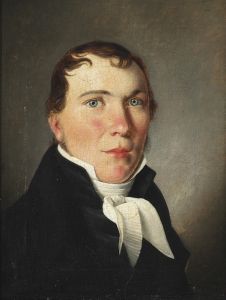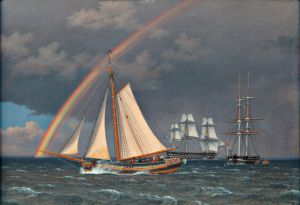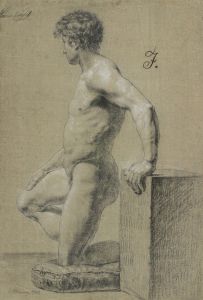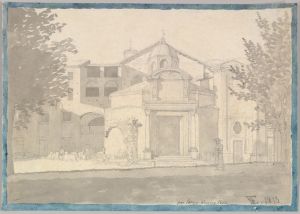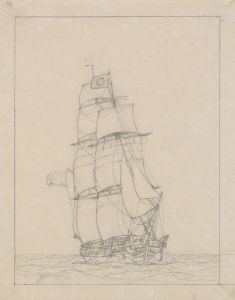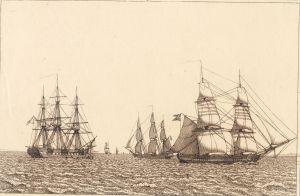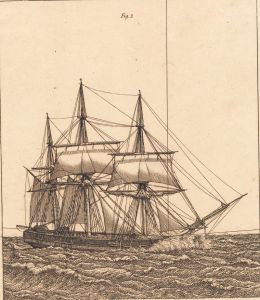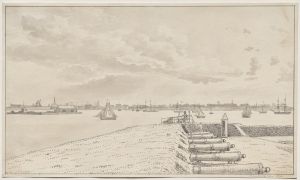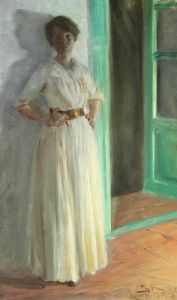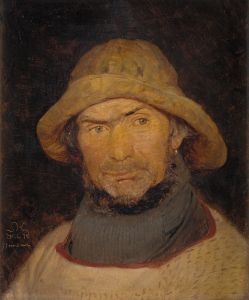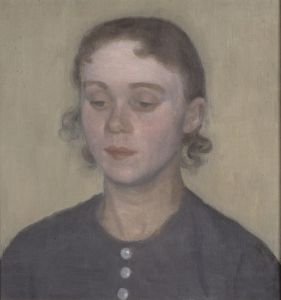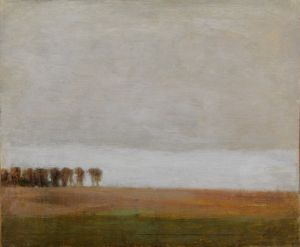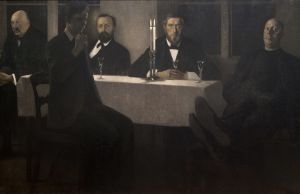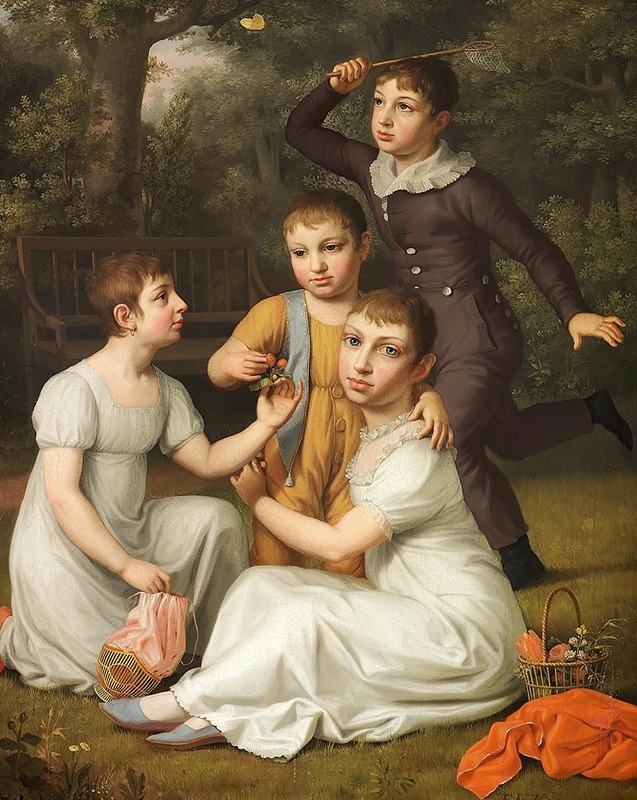
Portræt af Kammerherre, Plantageejer og Vice-Gouvernør i Vestindien Søbøtkers fire Børn, malede i Hummeltofte Have
A hand-painted replica of Christoffer Wilhelm Eckersberg’s masterpiece Portræt af Kammerherre, Plantageejer og Vice-Gouvernør i Vestindien Søbøtkers fire Børn, malede i Hummeltofte Have, meticulously crafted by professional artists to capture the true essence of the original. Each piece is created with museum-quality canvas and rare mineral pigments, carefully painted by experienced artists with delicate brushstrokes and rich, layered colors to perfectly recreate the texture of the original artwork. Unlike machine-printed reproductions, this hand-painted version brings the painting to life, infused with the artist’s emotions and skill in every stroke. Whether for personal collection or home decoration, it instantly elevates the artistic atmosphere of any space.
Christoffer Wilhelm Eckersberg, often referred to as the "father of Danish painting," created the artwork Portræt af Kammerherre, Plantageejer og Vice-Gouvernør i Vestindien Søbøtkers fire Børn, malede i Hummeltofte Have in 1807. This painting is a group portrait depicting the four children of chamberlain, plantation owner, and vice-governor in the Danish West Indies, Søbøtker. The work is notable for its detailed representation of the children and its setting in Hummeltofte Garden, a location in Denmark.
Eckersberg was a prominent figure in the Danish Golden Age of painting, and this work exemplifies his skill in portraiture and his ability to capture the individuality of his subjects. The painting reflects the neoclassical style that Eckersberg was known for, characterized by clarity, precision, and an emphasis on naturalism. The children are depicted in a serene outdoor setting, surrounded by lush greenery, which adds a sense of harmony and balance to the composition.
The painting holds historical significance as it provides insight into the lives of the Danish elite during the early 19th century, particularly those with ties to the Danish colonies in the West Indies. Søbøtker, the father of the children portrayed, was a prominent figure connected to Denmark's colonial enterprises, which were a significant aspect of the country's history during this period. However, the painting itself focuses on the children and their environment, rather than directly addressing the colonial context.
Eckersberg's attention to detail is evident in the depiction of the children's clothing, expressions, and posture, which convey their social status and individuality. The artist's use of light and color enhances the naturalistic quality of the scene, making it a quintessential example of his portraiture work.
Today, this painting is considered an important piece within Eckersberg's oeuvre and a valuable example of Danish Golden Age art. It is held in the collection of the Statens Museum for Kunst (National Gallery of Denmark) in Copenhagen, where it continues to be studied and appreciated for its artistic and historical significance.






